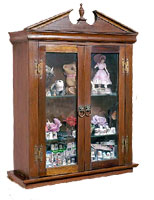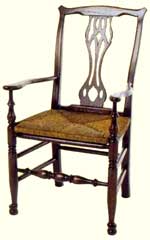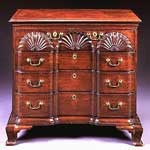The "New" Concise History is under construction here. Please bear with us as we improve our educational sections.
A Concise History of American Period Furniture
By Stanley D. Saperstein
Chippendale, 1714-1779
 Thomas Chippendale, English Furniture maker, conceived on of the most outstanding styles of the eighteenth century. His success raised his name to the title of his style, this was the first time a man who was not a reigning monarch gave his name to a great period. Thomas Chippendale, English Furniture maker, conceived on of the most outstanding styles of the eighteenth century. His success raised his name to the title of his style, this was the first time a man who was not a reigning monarch gave his name to a great period.
 Chippendale was both designer and master craftsman, a rare trait when most designers merely conceived and never actually built a functional form. The "Director," published by Chippendale in 1754, opened a new era in furniture making and is still used today. Chippendale was both designer and master craftsman, a rare trait when most designers merely conceived and never actually built a functional form. The "Director," published by Chippendale in 1754, opened a new era in furniture making and is still used today.
 Characteristics: Chippendale derived his styles from a combination of English, French, and Chinese designs. All his furniture is graceful and well-proportioned. The only defect in his design was that comfort was sometimes sacrificed for appearance. Characteristics: Chippendale derived his styles from a combination of English, French, and Chinese designs. All his furniture is graceful and well-proportioned. The only defect in his design was that comfort was sometimes sacrificed for appearance.
Early Chippendale pieces have cabriolet legs; later pieces have strait legs. Carving was the main type of decoration, favorite styles being lions' paws, shells, acanthus, acorns, roses, dolphins, and scrolls. Fretwork is used extensively, veneering occasionally, and also gilding and lacquering. Inlay, painting, or applied ornament is also used. Practically all of
 Chippendale's furniture is almost exclusively mahogany. A jump from the common heavy oak pieces of his predecessors. Chippendale's furniture is almost exclusively mahogany. A jump from the common heavy oak pieces of his predecessors.
Upholstered materials include leather in colors, brocade, velour, satin, and plush. His large pieces had broken pediments, and his Chinese work always had fretwork.
TheConciseHistoryofEarlyAmericanFurniture.PDF
Download a PDF Version of The Concise History
|






